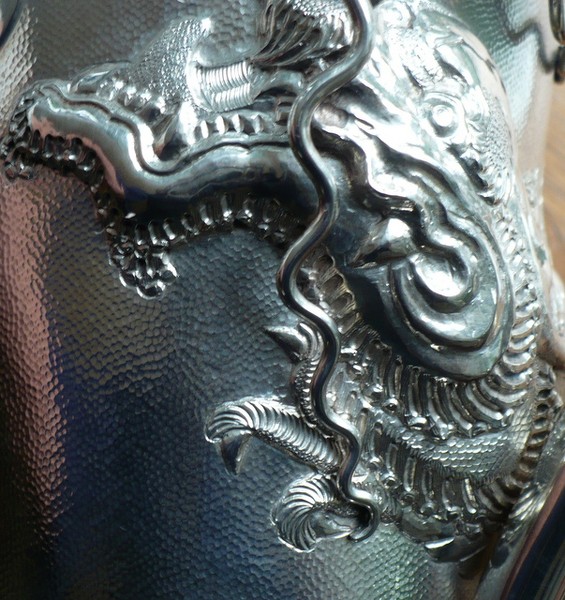Hi David,
Talking dragons, may I ask you; are there noticeable differences between the number of claws possessed by a Japanese dragon and the number of claws possessed by a Chinese dragon?
I have read that if the dragon has more than three claws its Chinese; some authors differentiate Japanese ryū and Chinese long dragons by the number of claws on their feet. "In Japan," writes Gould (1896:248), "it is invariably figured as possessing three claws, whereas in China it has four or five, according as it is an ordinary or an Imperial emblem."
The two Chinese dragons, on my two pieces of Chinese export silver, one shows 3 claws but the other one has four claws. Am I right if I say; three claws could be Japanese or a Chinese made dragon but more than three claws the dragon is Chinese or better made by a Chinese master?

Three claws retailer Zee Sung Shanghai circa 1910. See;
http://www.925-1000.com/forum/viewtopic ... 13&t=32112

Four claws retailer Hung Chong Shanghai circa 1890. See;
http://www.925-1000.com/forum/viewtopic ... 13&t=29690
Never realized I might have read the Dragon Claw story on our own forum as kindly mentioned by you with link; http://www.925-1000.com/forum/viewtopic ... 13&t=28763
Thanks for the great information.
Regards,
Oel